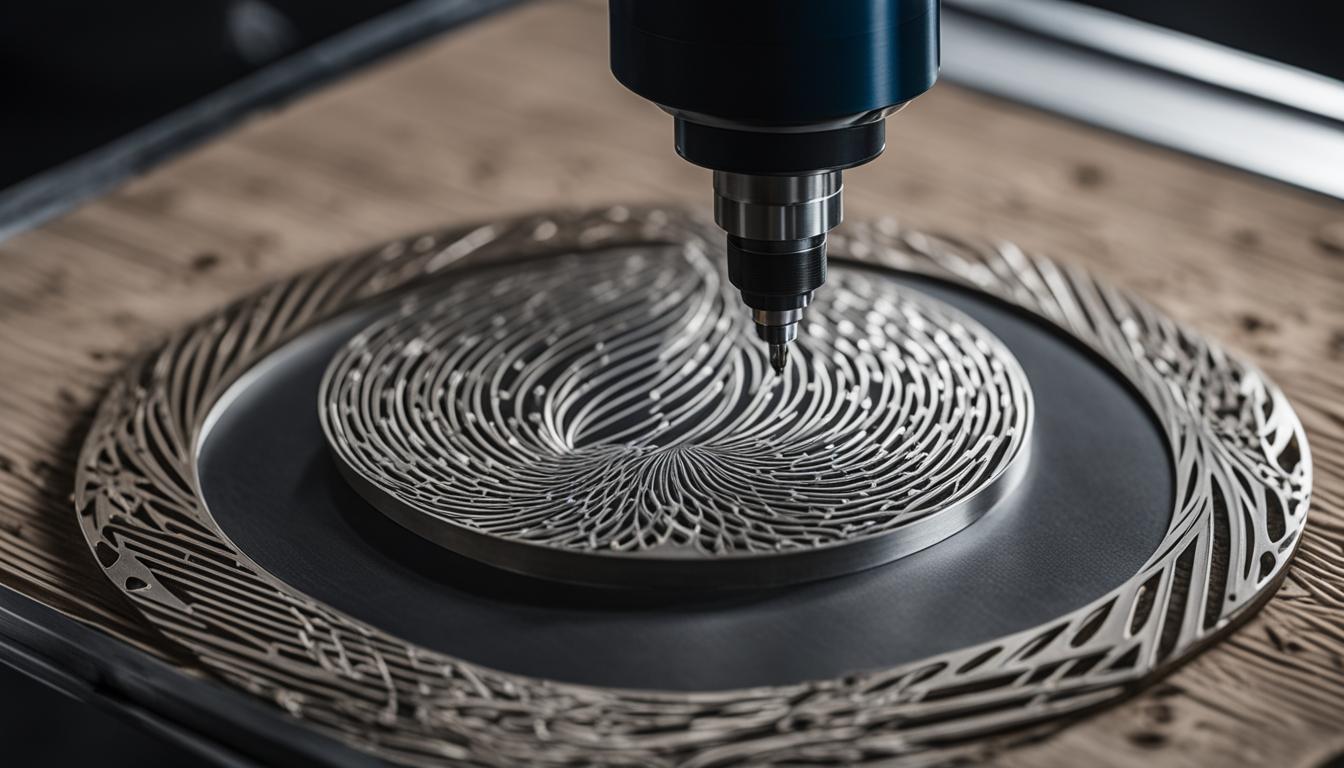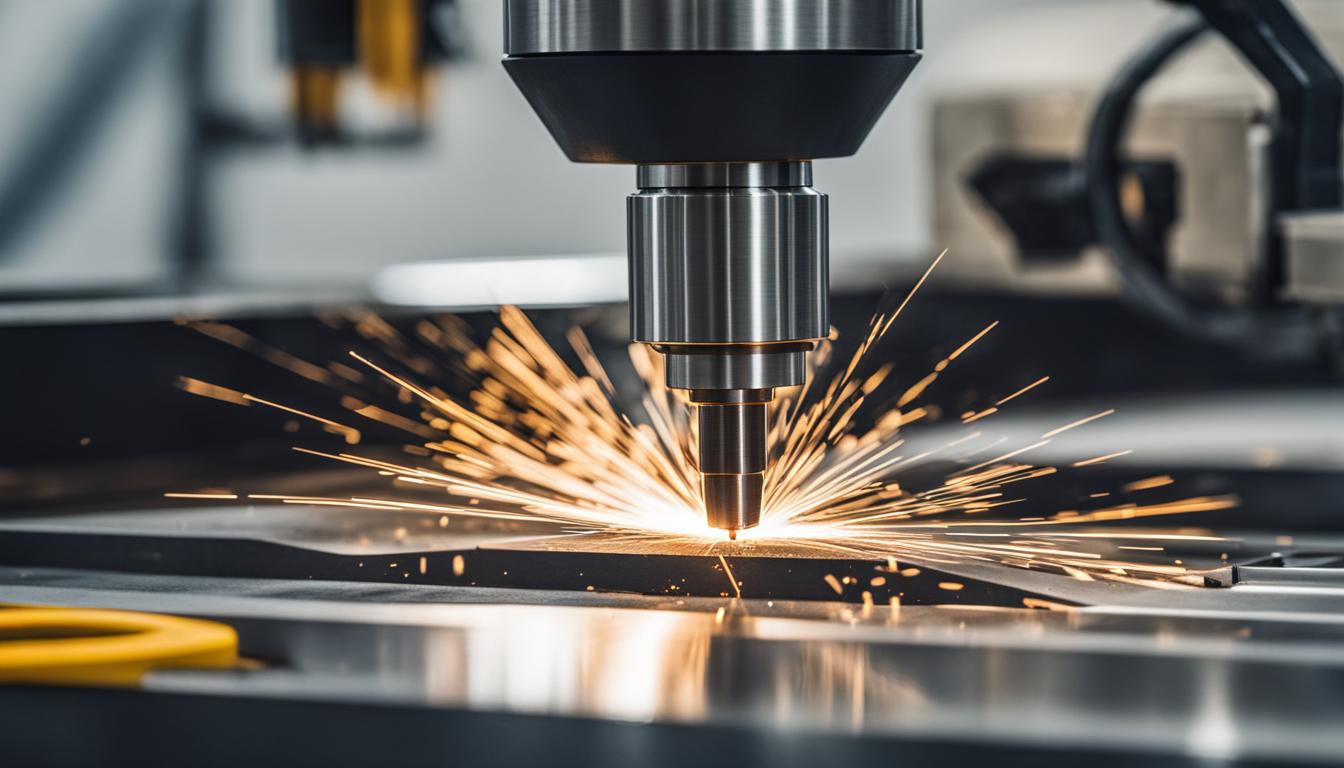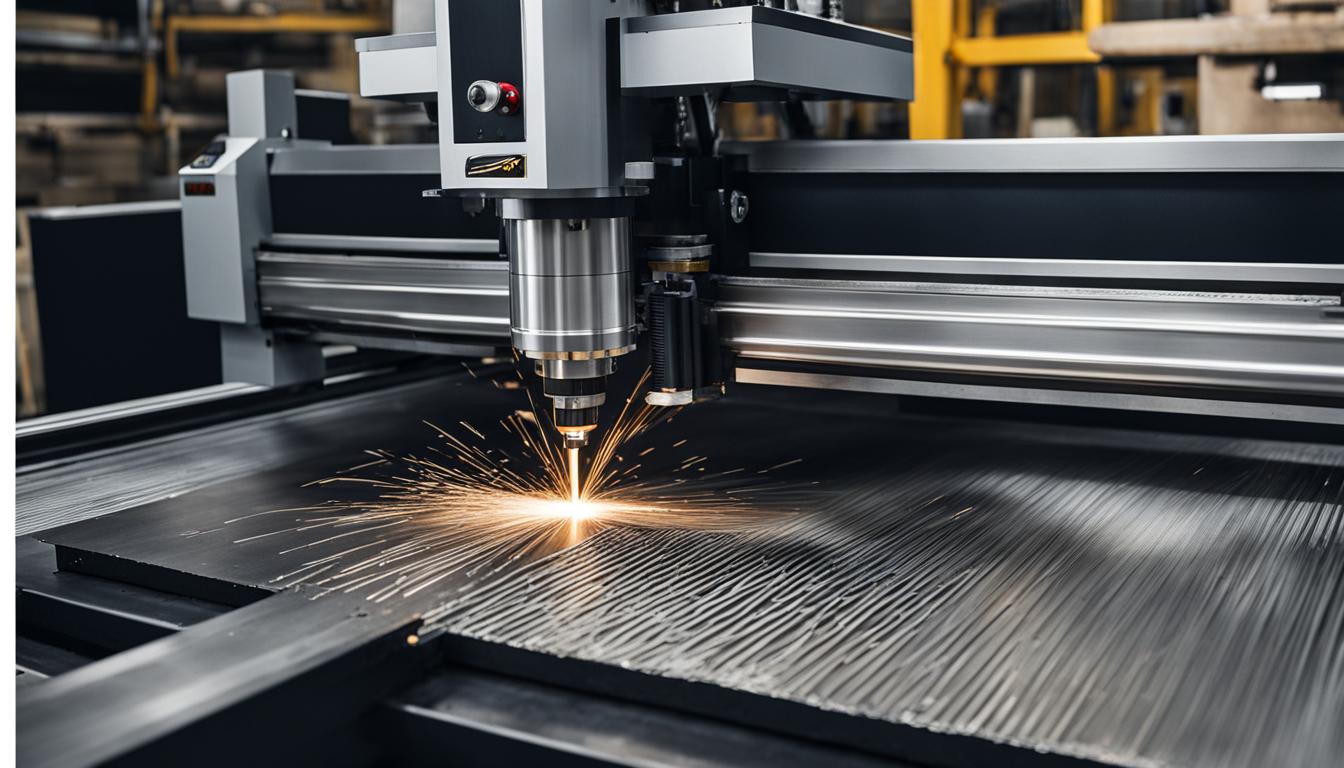Engraving is an age-old manufacturing technique that has evolved into CNC engraving, a process that utilizes automatic CNC technology to guide the engraving tool with high accuracy and precision control. In this article, we will explore what CNC engraving is and how it works, the different types of CNC engraving processes, the materials that can be engraved using a CNC machine, the advantages of CNC engraving, and its various applications.
Key Takeaways
- CNC engraving is a cost-effective process that offers precise and accurate results.
- There are various types of CNC engraving processes, including CNC rotary engraving, CNC laser engraving, and diamond drag engraving.
- Materials such as metals, wood, and plastics can be engraved using a CNC machine.
- CNC engraving saves time and allows for easy customization of engraving designs.
- The applications of CNC engraving are diverse, ranging from decor and sign-making to industrial designs and personalization.
What is CNC Engraving?
CNC engraving is the modern version of engraving that utilizes automatic CNC technology to guide the engraving tool. It involves gradually removing a small amount of material from a surface along a defined path, leaving a visible marking on the surface of the substrate. CNC engraving is a cost-effective process with wide-ranging applications, particularly in the arts and sign-making industries.
With CNC engraving, the engraving process is streamlined and precise. The surface substrate, such as metal, wood, or plastic, is carefully engraved using a CNC machine, which enables material removal with unparalleled precision control. This automated process ensures consistency and accuracy, making CNC engraving an ideal choice for creating intricate designs and detailed markings.
One of the key advantages of CNC engraving is its cost-effectiveness. By using automatic CNC technology, the engraving process is efficient, minimizing material wastage and reducing production time compared to manual engraving methods. This makes CNC engraving a cost-effective solution for both small-scale and large-scale projects.
Whether it’s engraving logos on promotional items, creating personalized gifts, crafting artistic pieces, or producing industrial components, CNC engraving offers a versatile and precise solution. From adding serial numbers to manufacturing parts with clear markings for identification, CNC engraving ensures high-quality results with exceptional detail and accuracy.
Advantages of CNC Engraving:
- Precision control for intricate designs
- Cost-effective process
- Wide-ranging applications
- Efficient and time-saving
- Consistent and accurate results
With its ability to achieve high precision and accuracy, CNC engraving has become an indispensable tool in various industries. From customizing products to creating unique designs, CNC engraving offers a versatile and cost-effective process for material marking and personalization.
How CNC Engraving Works
The CNC engraving process involves several steps that seamlessly integrate CAD, CAM, and automatic CNC technology. Understanding the workflow will give you insight into the precision and efficiency that CNC engraving offers.
CAD Design
The process begins with a designer creating a visualization of the desired engraving pattern using CAD (Computer-Aided Design) software. CAD software allows for detailed and accurate design creation, providing a digital representation of the final engraving.
CAM Programming
Once the design is complete, a CAM (Computer-Aided Manufacturing) software takes over to generate a program for the CNC engraving machine. This program contains specific instructions, such as tooling selection, process parameters, and tool paths, needed to execute the engraving.
G-code Generation
The CAM software generates G-code, a language understood by CNC machines, based on the CAD design. G-code communicates with the CNC machine to control its movements and actions during the engraving process. It includes commands for tool movements, speeds, depths, and other essential parameters.
Machine Setup
Prior to the engraving process, the workpiece is securely set up in the CNC engraving machine. This involves properly positioning and securing the material in place, ensuring stability and accuracy during engraving. The setup may involve clamps, fixtures, or vacuum hold-down systems, depending on the machine and material.
Automatic CNC Engraving
Once the setup is complete, the automatic CNC technology takes control. The CNC machine interprets the G-code and precisely moves the engraving tool along the defined tool paths. The tool cuts into the surface of the material, gradually removing small amounts of material to create the desired engraving.

After the engraving process is finished, the workpiece is removed from the machine, and the CNC machine is ready for the next project. The seamless integration of CAD, CAM, G-code, and automatic CNC technology allows for efficient, accurate, and repeatable CNC engraving.
Types of CNC Engraving
When it comes to CNC engraving, there are several different processes that can be used. Each type of engraving method offers its own set of advantages and is suitable for specific materials and applications. Let’s explore the three main types of CNC engraving: CNC rotary engraving, CNC laser engraving, and diamond drag engraving.
CNC Rotary Engraving
CNC rotary engraving is a technique that involves the use of rotating cutting tools to remove material from the substrate. The cutting tools can include various types of end mills or other specialized engraving bits. The spindle speed and depth of cut can be adjusted to achieve the desired engraving depth and level of detail. This method is widely used for creating intricate designs on a variety of materials, including metals, plastics, and wood.
CNC Laser Engraving
CNC laser engraving utilizes a high-intensity laser beam to heat the surface of the substrate and create markings. The laser beam is controlled by the CNC system, allowing for precise and accurate engraving. This method is often used for engraving on materials such as acrylic, wood, glass, and some metals. It is known for its ability to produce detailed and intricate designs, as well as its versatility in engraving various materials.
Diamond Drag Engraving
In diamond drag engraving, a sharp diamond tip is dragged across the surface of the substrate to create markings. This method is particularly effective for engraving hard materials such as metals, glass, and ceramic. The depth of cut can be adjusted by varying the downward pressure applied to the diamond tip. Diamond drag engraving is commonly employed for applications that require high durability and resistance to wear, such as serial number marking, logos, and labels on industrial parts.
Each type of CNC engraving process offers unique benefits and is suitable for different materials and requirements. The choice of engraving method depends on factors such as the desired level of detail, material characteristics, and the specific application. To help illustrate the differences between these methods, the table below provides a comparison of their key features:
| Engraving Method | Advantages | Materials | Applications |
|---|---|---|---|
| CNC Rotary Engraving | – Versatile and precise – Suitable for various materials – Can achieve intricate designs |
– Metals – Plastics – Wood |
– Signage – Decorative items – Industrial parts |
| CNC Laser Engraving | – High precision and accuracy – Versatile for different materials – Detailed and intricate designs |
– Acrylic – Wood – Glass – Some metals |
– Personalized gifts – Nameplates – Artwork |
| Diamond Drag Engraving | – Durable and resistant to wear – Suitable for hard materials – Marking and labeling |
– Metals – Glass – Ceramic |
– Serial number marking – Industrial part identification – Logo engraving |
Common Materials Used for Engraving Machining
CNC engraving machines offer versatility when it comes to working with different materials. Whether you’re engraving metals, wood, or plastics, a CNC machine can handle the task with precision and accuracy.
Metals
Metals such as aluminum, steel, brass, copper, and gold are commonly engraved using CNC machines. The high precision control of these machines allows for intricate designs and markings on metal surfaces.
Wood
Wood is a popular material for engraving, and CNC machines can work with various types of wood. From softwood to hardwood, and even balsa, birch, and cork, CNC engraving can bring out the natural beauty of wood grain with detailed engravings.
Plastics
Plastics like polyethylene and polystyrene are compatible with CNC engraving. Whether you’re engraving for signage or creating custom designs on plastic surfaces, a CNC machine can achieve precise and consistent results.
Advantages of CNC Engraving
CNC engraving offers several key advantages that make it a popular choice for precision marking and customization. These advantages include:
Precision and Accuracy
CNC engraving is renowned for its exceptional precision and accuracy. The automatic CNC motion control ensures precise movements of the engraving tool, resulting in engravings with tolerances as low as +/- 0.0025mm. This level of precision allows for intricate details and complex designs to be accurately reproduced, ensuring high-quality end results.
Time-Saving
Compared to manual engraving methods, CNC engraving is a time-saving process. With the use of automatic CNC technology, engraving tasks can be completed efficiently and within minutes. The high-speed operation of CNC engraving machines enables rapid production, making it ideal for large-scale projects or tight deadlines.
Customization
CNC engraving offers limitless opportunities for customization. The use of CAD/CAM software allows designers to easily create and modify engraving designs, making it ideal for rapid prototyping or multiple iterations. From personalizing products with unique text or logos to creating intricate artwork, CNC engraving provides the flexibility to bring any design vision to life.
High Efficiency
With its automated operation and advanced technology, CNC engraving is a highly efficient process. The precise control and versatility of CNC engraving machines allow for quick setup and easy execution of complex engraving tasks. This efficiency translates into increased productivity and reduced production costs, making CNC engraving a cost-effective solution for various industries.
Overall, CNC engraving combines precision, time-saving capabilities, customization options, and high efficiency to deliver exceptional results in a wide range of applications.

Applications of CNC Engraving
CNC engraving has become an indispensable tool in a wide range of industries due to its versatility and precision. One of the key applications of CNC engraving is in the field of decor and sign-making. With CNC engraving, intricate designs and patterns can be etched onto various materials, such as wood, metal, and plastic, allowing for the creation of visually stunning and personalized decor items.
In addition to decor, CNC engraving finds extensive usage in industrial designs. The high precision and accuracy of CNC engraving machines make them ideal for creating intricate and detailed patterns on parts and components used in various industries, including automotive, aerospace, and electronics. From branding logos to serial numbers, CNC engraving enables precise and permanent markings, ensuring product authenticity and traceability.
Personalization is another area where CNC engraving shines. By leveraging CNC engraving technology, manufacturers can add personalized text, names, dates, or even photographs to products. This level of customization not only enhances the aesthetics of the product but also creates a unique and memorable experience for the end-user. Whether it’s a personalized gift or a bespoke item, CNC engraving brings personalization to a whole new level.
Furthermore, CNC engraving plays a crucial role in branding. The ability to engrave logos, taglines, and other branding elements onto products helps businesses establish a strong brand identity and communicate their values effectively. From consumer goods to promotional items, CNC engraving enables consistent and high-quality branding across a wide range of products.
